Eisden Belgium - Trees and Flowers, How do they Grow?
- Maria Scuor
- Sep 7, 2022
- 5 min read
When I travel, I love to see the trees and flowers that grow in the region. It is amazing how different countries have different landscape when it comes to plants. Therefore before I talk about the trees and flowers I saw in Eisen, I've decided to make it a learning moment on why plants grow where they grow, first.
Botany, the Greek word for pasture, herbs, grass or fodder, is a branch of biology dealing with plant life. Botanists, the scientist that study plants, have over 430,000 species of land and bryophyte plants to observe in their studies.
Why plants grow where they grow is due to the effects of the environment. The factors that impact environment are light, temperature, water, humidity and nutrition. Let's explore each of these factors:
Light - there are three characteristics of light that we need to be aware of: quantity, quality and duration.
Quantity - is the intensity or concentration of sunlight. It varies throughout the seasons and regions. Therefore plants in different regions may be short-day (long-night) plants, or long-day (short-night) plants
Quality - refers to the colour wavelength of light. Sunlight supplies a range of wavelengths and are broken into prisms of red, orange, yellow, green, blue, indigo and violet. The greatest effect on growth is the blue and red lights. Blue is primarily for leaf growth and red combined with blue encourages floral growth. Plants look green to us because they reflect, rather than absorb, green light
Duration - also knows as photoperiod, refers to the amount the plant is exposed to light. Research shows it is the amount of uninterrupted darkness, that is critical to floral development. Plants are classified into three categories:
short-day (long-night) - plants form flowers only when day length is less than about 12 hours. Many spring- and fall-flowering plants, such as chrysanthemum, poinsettia and Christmas cactus, are in this category
long-day (short-night) - form flowers only when day length exceeds 12 hours. Most summer-flowering plants (e.g., rudbeckia, California poppy and aster), as well as many vegetables (beet, radish, lettuce, spinach and potato), are in this category
day-neutral - plants form flowers regardless of day length. Examples are tomato, corn, cucumber and some strawberry cultivars
Temperature - influences germination, flowering, photosynthesis and respiration. As temperature increases, photosynthesis, transpiration and respiration increase.
Germination - temperature required for germination varies by species. Generally, cool-season crops (e.g., spinach, radish and lettuce) germinate best at 55° to 65°F, while warm-season crops (e.g., tomato, petunia and lobelia) germinate best at 65° to 75°F
Flowering - horticulturists use temperature in combination with day length to manipulate flowering. For example, a Christmas cactus forms flowers as a result of short days and low temperatures. To encourage a Christmas cactus to bloom, place it in a room with more than 12 hours of darkness each day and a temperature of 50° to 55°F until flower buds form. If temperatures are high and days are long, cool-season crops such as spinach will flower (bolt). However, if temperatures are too cool, fruit will not set on warm-season crops such as tomato
Photosynthesis and respiration - known as thermoperiod refers to the daily temperature change. Plants grow best when daytime temperature is about 10 to 15 degrees higher than nighttime temperature. Under these conditions, plants photosynthesize (build up) and respire (break down) during optimum daytime temperatures and then curtail respiration at night. Some plants need a certain amount of low temperatures (dormancy) to grow best, such as daffodils are stored in cold temperatures to mature. Plants that can withstand low temperatures are classified as hardy plants.
Water - most plants contain 90% water and it plays many parts in a plants growth:
Main component in photosynthesis and respiration
Like air in an inflated balloon, water is responsible for the fullness and firmness of plant tissue. This is called Turgor and is needed to maintain cell shape and ensure cell growth
Is a solvent for minerals and carbohydrates moving through the plant
Responsible for cooling leaves as it evaporates from leaf tissue during transpiration
A regulator of stomatal opening and closing, thus controlling transpiration and, to some degree, photosynthesis
The source of pressure to move roots through the soil
The medium in which most biochemical reactions take place
Relative Humidity is the ratio of water vapor in the air to the amount of water the air could hold at the current temperature and pressure. Warm air can hold more water vapor than cold air. Relative humidity is given as a percent. For example, if a pound of air at 75°F could hold 4 grams of water vapor, and there are only 3 grams of water in the air, then the relative humidity (RH) is: 3 ÷ 4 = 0.75 = 75% Water vapor moves from an area of high relative humidity to one of low relative humidity. The greater the difference in humidity, the faster water moves. This factor is important because the rate of water movement directly affects a plant's transpiration rate. If wind blows the humidity bubble away, however, transpiration increases. Thus, transpiration usually is at its peak on hot, dry, windy days. On the other hand, transpiration generally is quite slow when temperatures are cool, humidity is high, and there is no wind. Hot, dry conditions generally occur during the summer, which partially explains why plants wilt quickly in the summer. If a constant supply of water is not available to be absorbed by the roots and moved to the leaves, turgor pressure is lost and leaves go limp.
Nutrition - Plant nutrition often is confused with fertilization. Plant nutrition refers to a plant's need for and use of basic chemical elements. Fertilization is the term used when these materials are added to the environment around a plant. A lot must happen before a chemical element in a fertilizer can be used by a plant. Plants need 17 elements for normal growth. Three of them: carbon, hydrogen and oxygen, are found in air and water. The rest are found in the soil. Most of the nutrients a plant needs are dissolved in water and then absorbed by its roots. In fact, 98 percent are absorbed from the soil-water solution, and only about 2 percent are actually extracted from soil particles. Fertilizers are materials containing plant nutrients that are added to the environment around a plant. Generally, they are added to the water or soil, but some can be sprayed on leaves. Fertilizers are not plant food! Plants produce their own food from water, carbon dioxide and solar energy through photosynthesis. This food (sugars and carbohydrates) is combined with plant nutrients to produce proteins, enzymes, vitamins and other elements essential to growth.
This is a high-level debrief on how plants grow in environments but if you want to learn more the internet is full of great information.
When I started my morning walks in Eisden, the hometown of Gianni's cousins Jean-Marie and Beniamino live in, I didn't think there were many flowers. The reason, because everything at a distance looks green and lush with not much colour. Even Dominque, our second cousin, was surprised when I told him there were not many flowers.
The hedges and trees are overpowering but as I walked and snapped photo's of the floral colours, there truly were many flowers to be seen and I was surprised I got 32 different varieties, therefore Dominique was right.
Here are the trees and shrubs native to this region:
Here are the flowers from the region which I was able to find names from Apples Visual Look Up which is one of the coolest features I've just learned about:













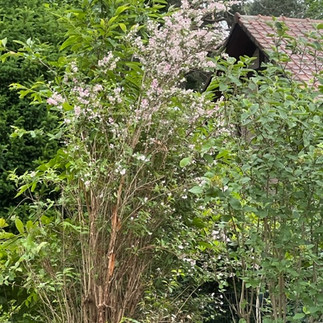

























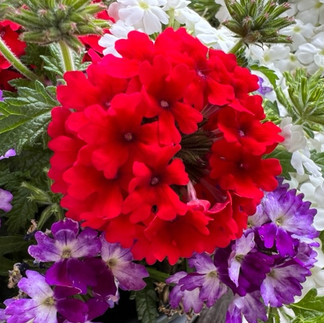







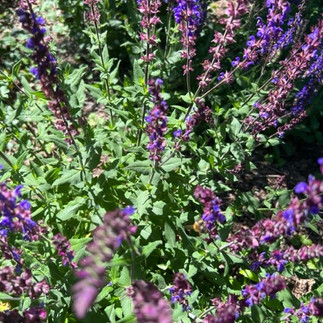













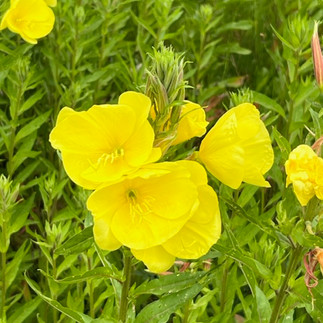











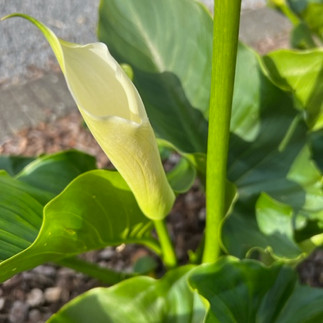
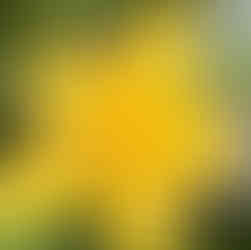



Comments